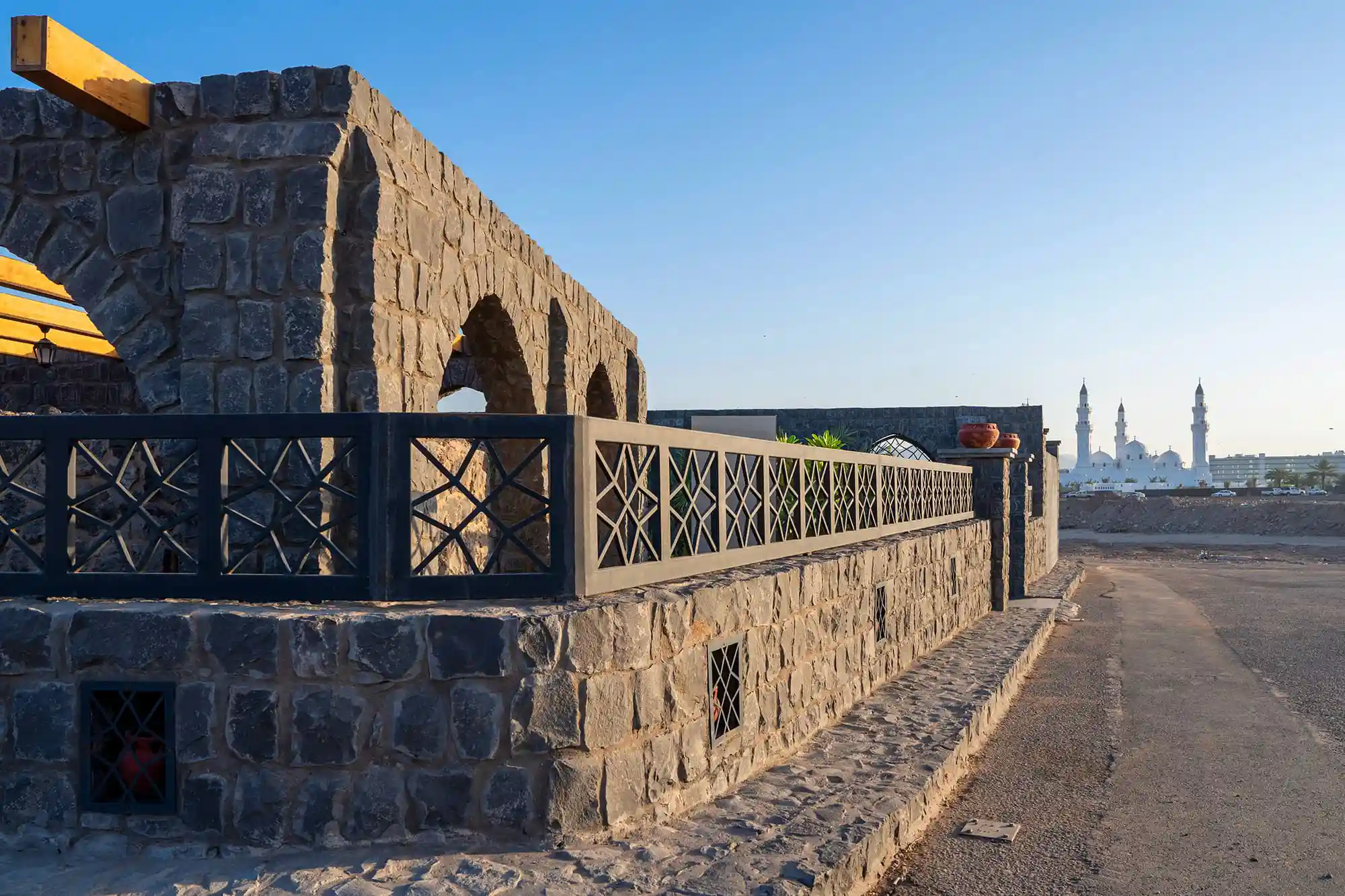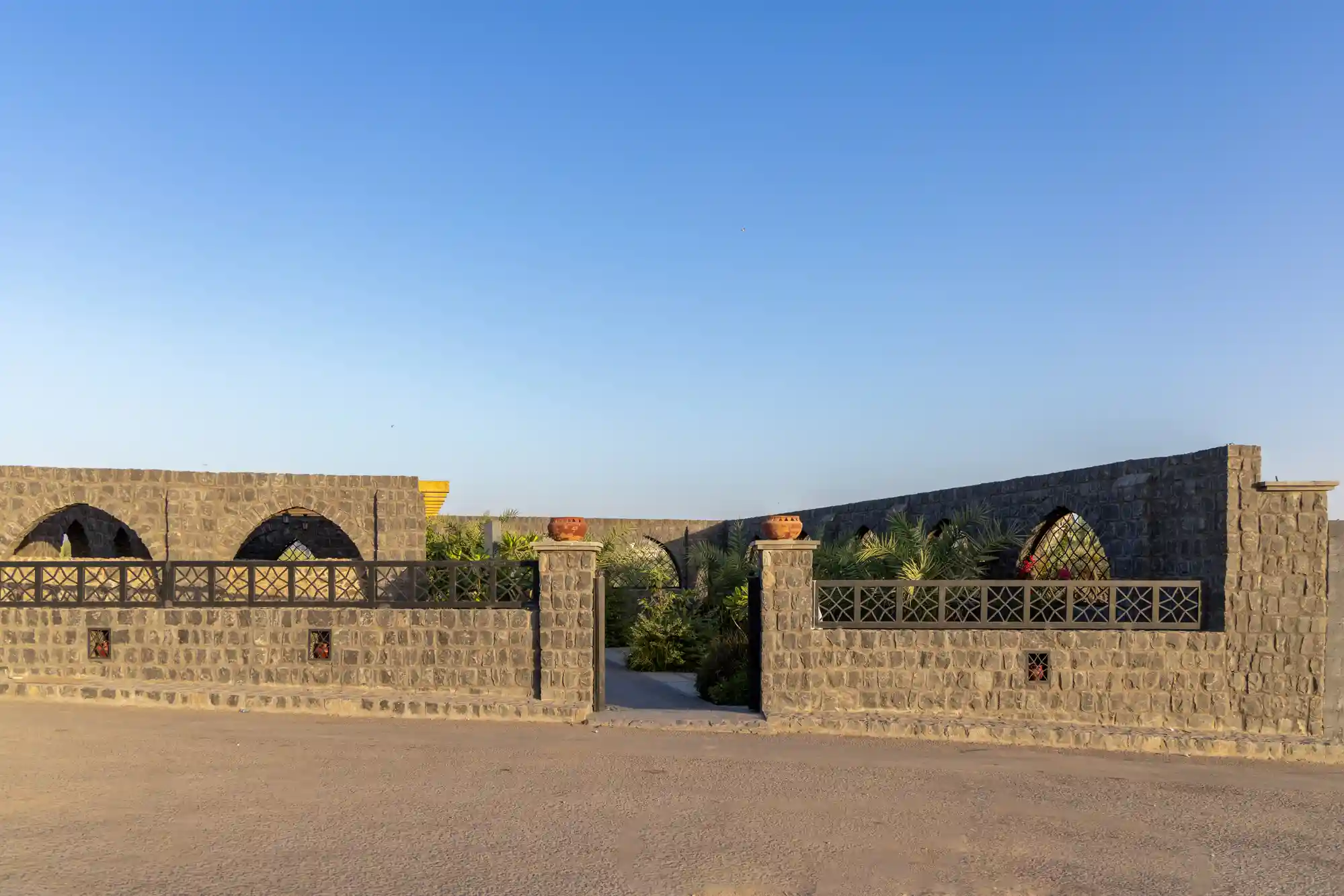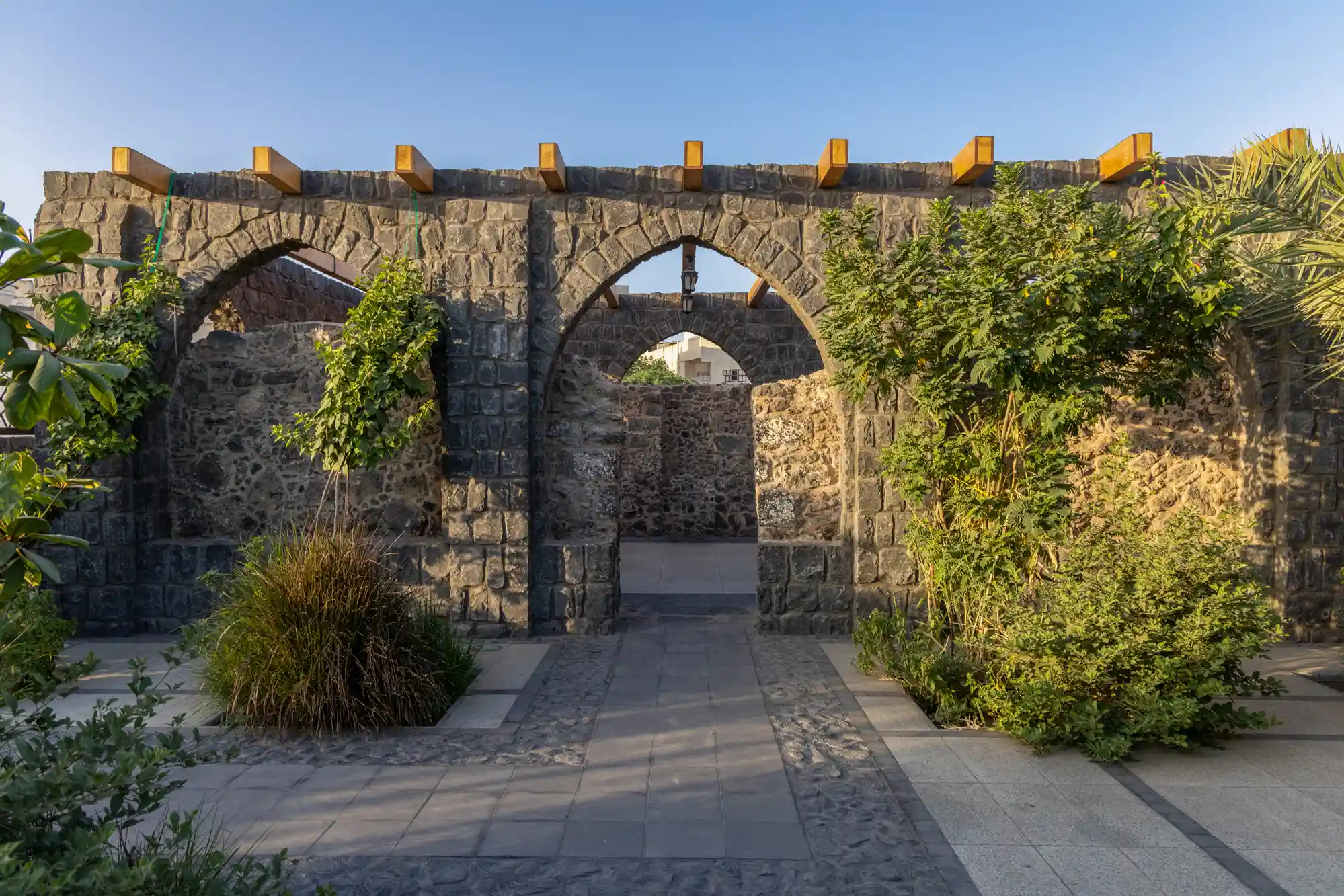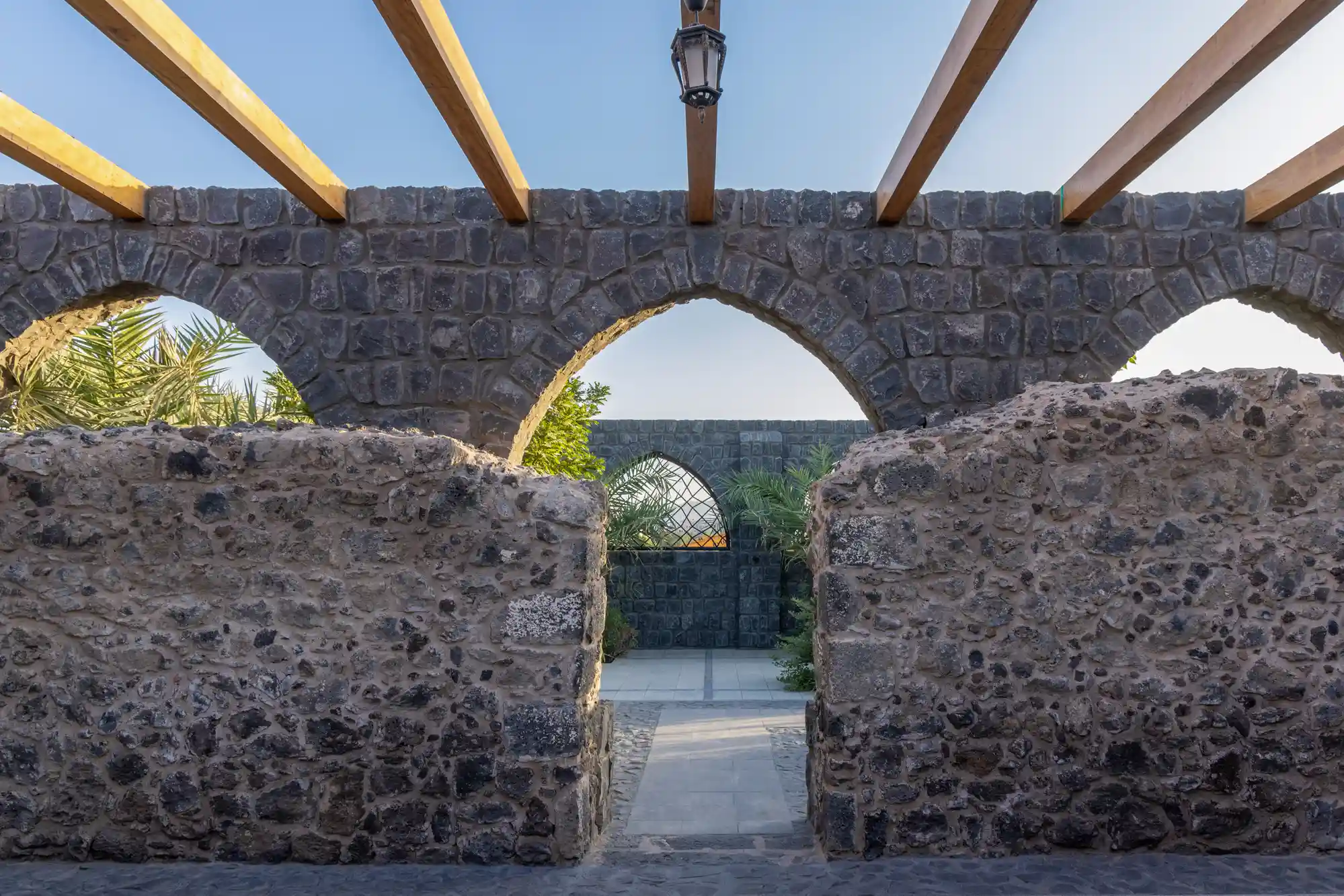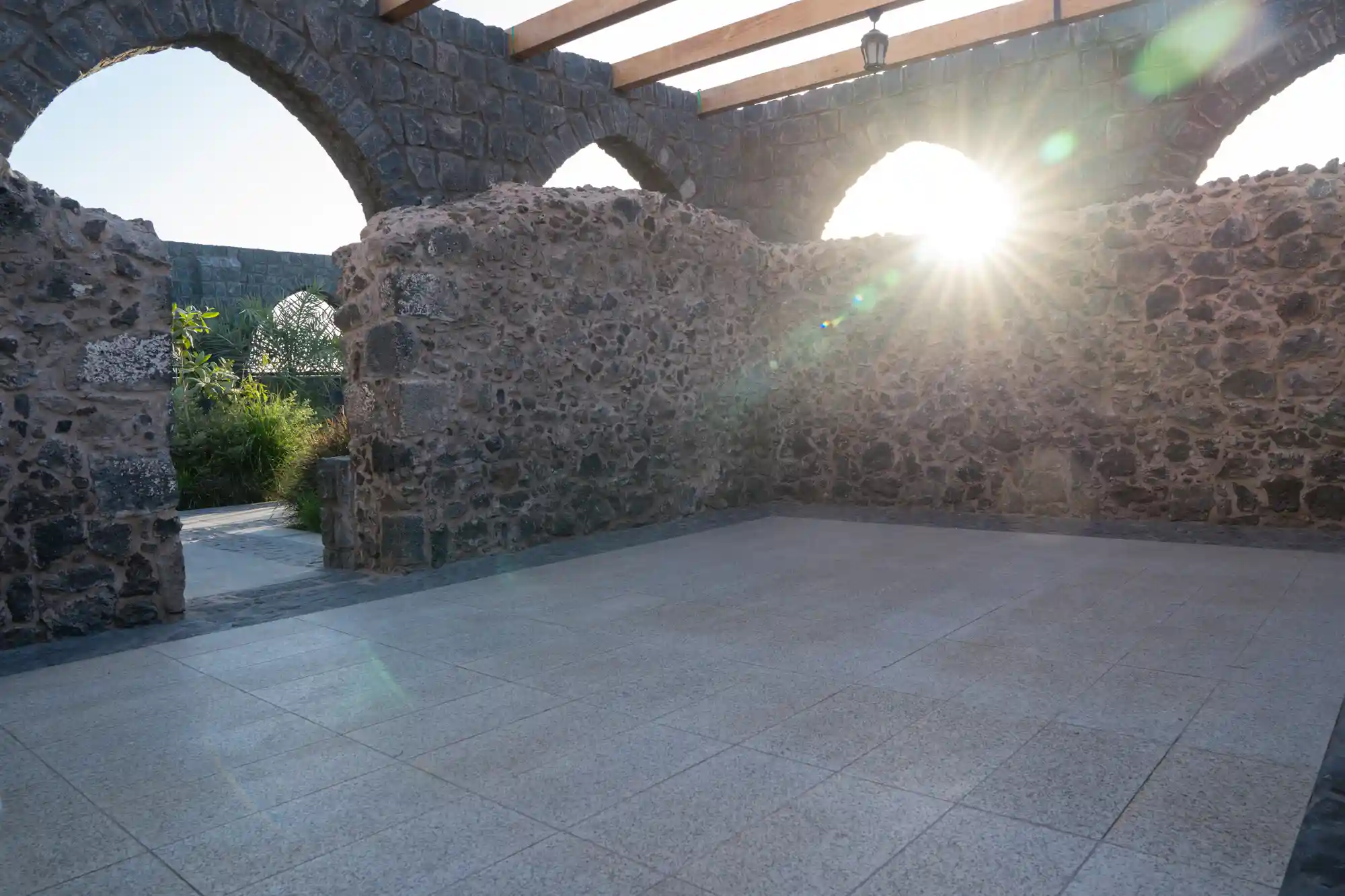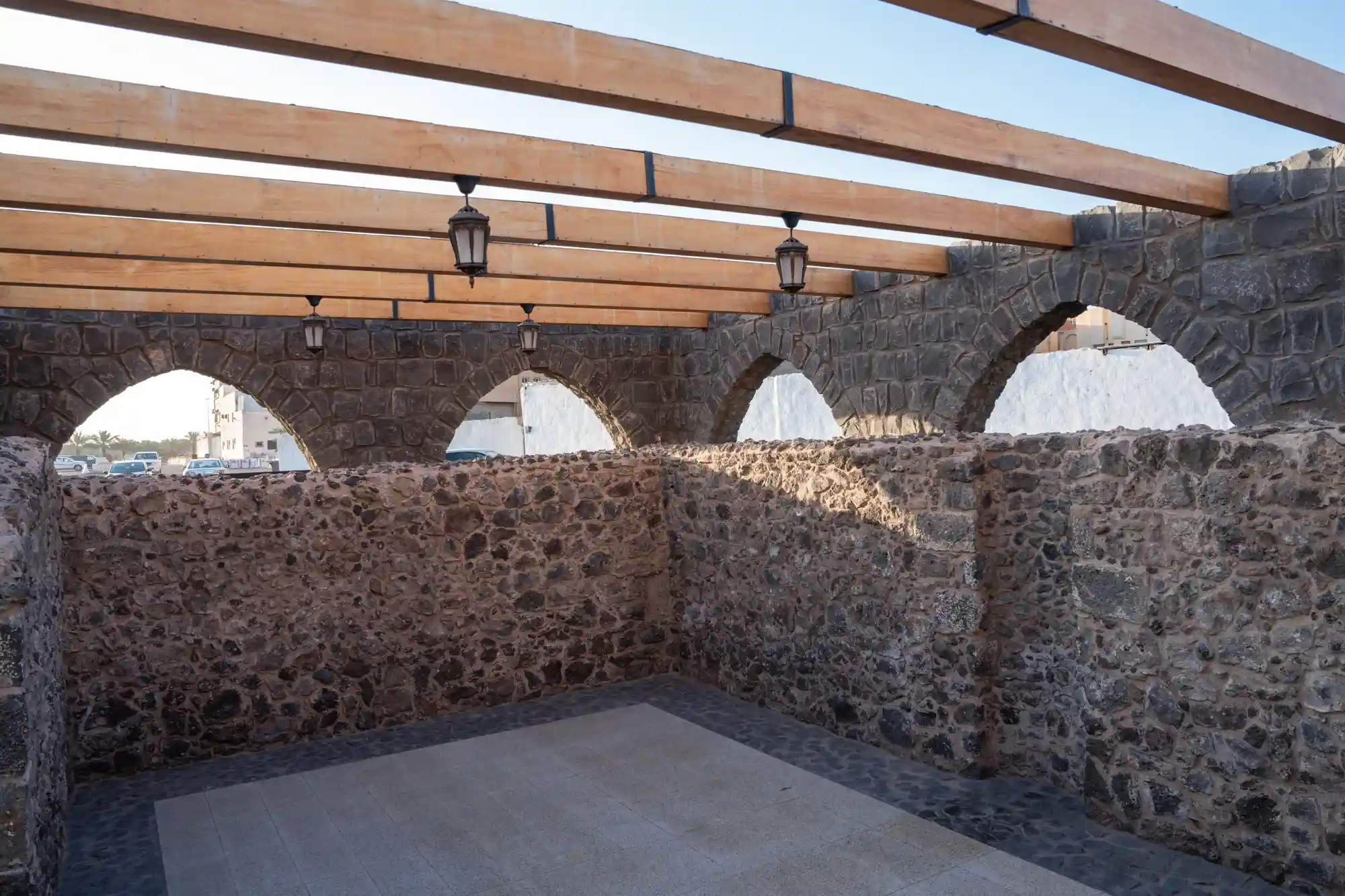It was given this name because it is located in the village of Bani Anif, a Bali people who lived between Bani Amr bin Awf in Quba and Al-Osbah. This mosque is on the right side of the Hijra Route leading to Madinah, southwest of Quba Mosque.
The mosque’s current structure is an unroofed stone structure; it has been restored like other historical mosques. The mosque’s footprint was visible on high ground, and about two meters of its walls remained before renovation. It was built of basalt stone, witha trace of the Mihrab visible in it, and its entrance was built on the north side.
Historical Significance:
The mosque is close to Quba Mosque to the southwest. Bani Unaif Mosque was built by Banu Unaif in one of their forts on the road leading to Madinah from the south, opposite to Al-Qaim Farm. A subtribe of Bali, Banu Unaif were the allies of Bani Amr ibn Awf, a subtribe of Aws. They are also believed to be of the descendants of Amaleeq, who had settled in Yathrib before the advent of Aws and Khazraj.
The Prophet (ﷺ) went to Bani Unaif to visit Talha ibn Al-Bara’ during his illness. The Prophet prayed in their quarters, and they honored the spot where he prayed and used to spray it with water. Ultimately, they built a mosque there that was named after them.
An Emblem of the Past:
There was initially no structure on the site where the Prophet (ﷺ) prayed. Later on, the mosque was built using black basalt stones and mud bricks. With the passage of time, only a few traces of the structure remained.
During the reign of King Salman ibn Abdulaziz, it was restored as part of the program of preservation of historical mosques.
The traditional design of the site was preserved. It has an open ceiling. Spaced timber beams are installed to support the structure and allow ventilation. Lanterns hang from these timber beams. The floor is covered with white marble. Shrubs and palm trees are grown in the outer stone-tile courtyard, along the dark basalt rocks of the mosque wall.
Tips for Visitors:
The mosque receives visitors 24 hours a day. It is best to visit during the daytime to see its beautiful architectural motifs clearly.
